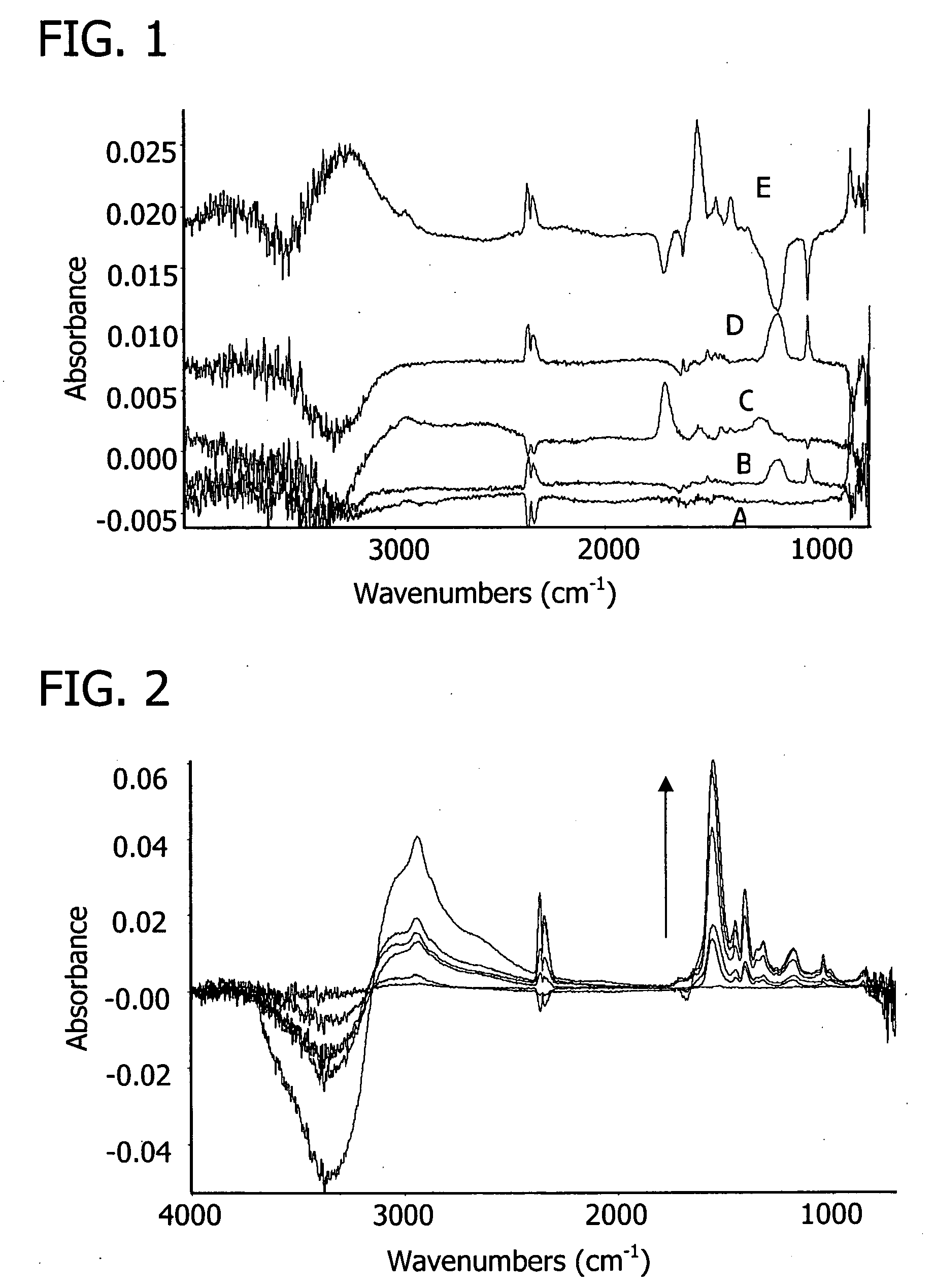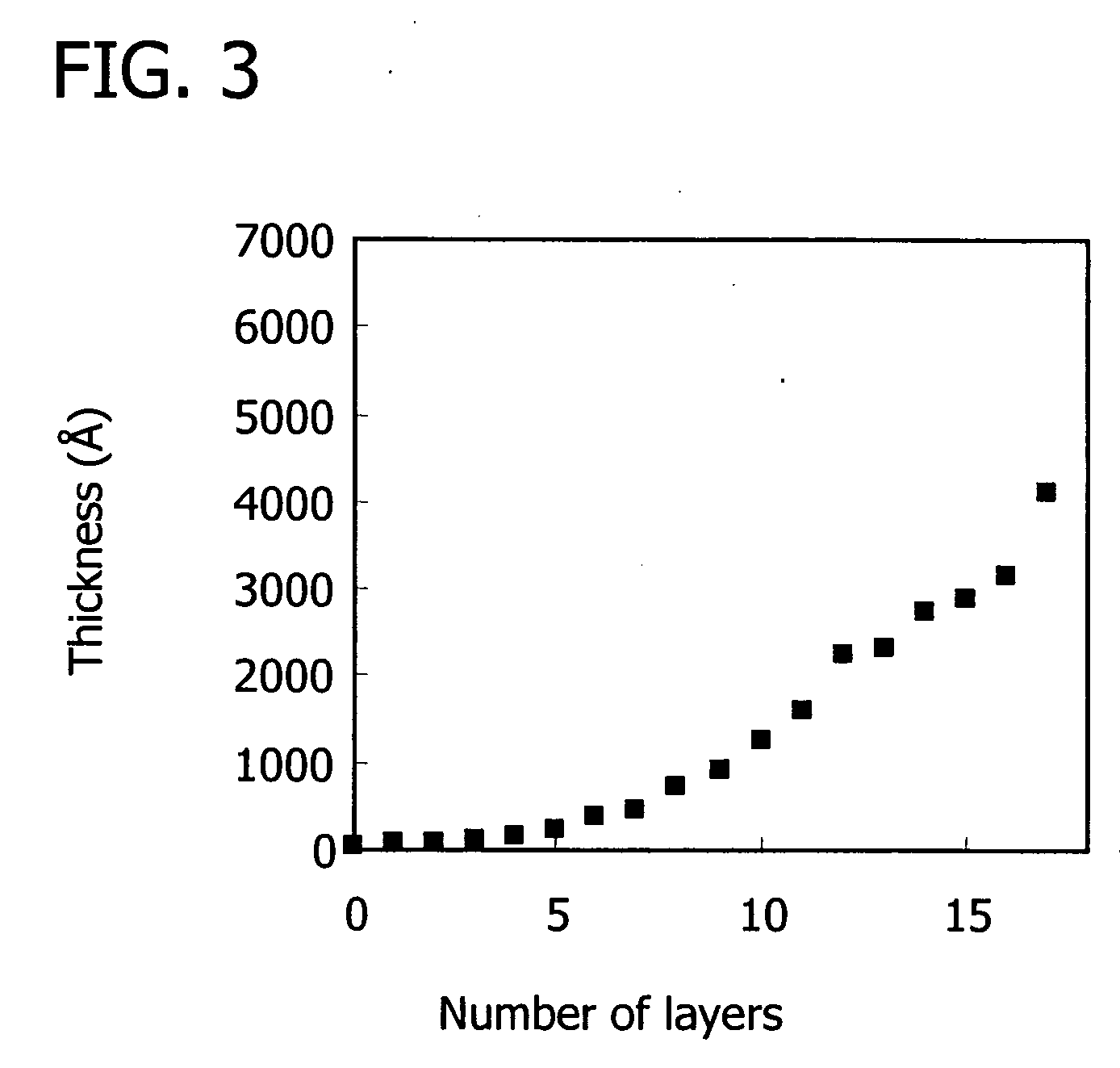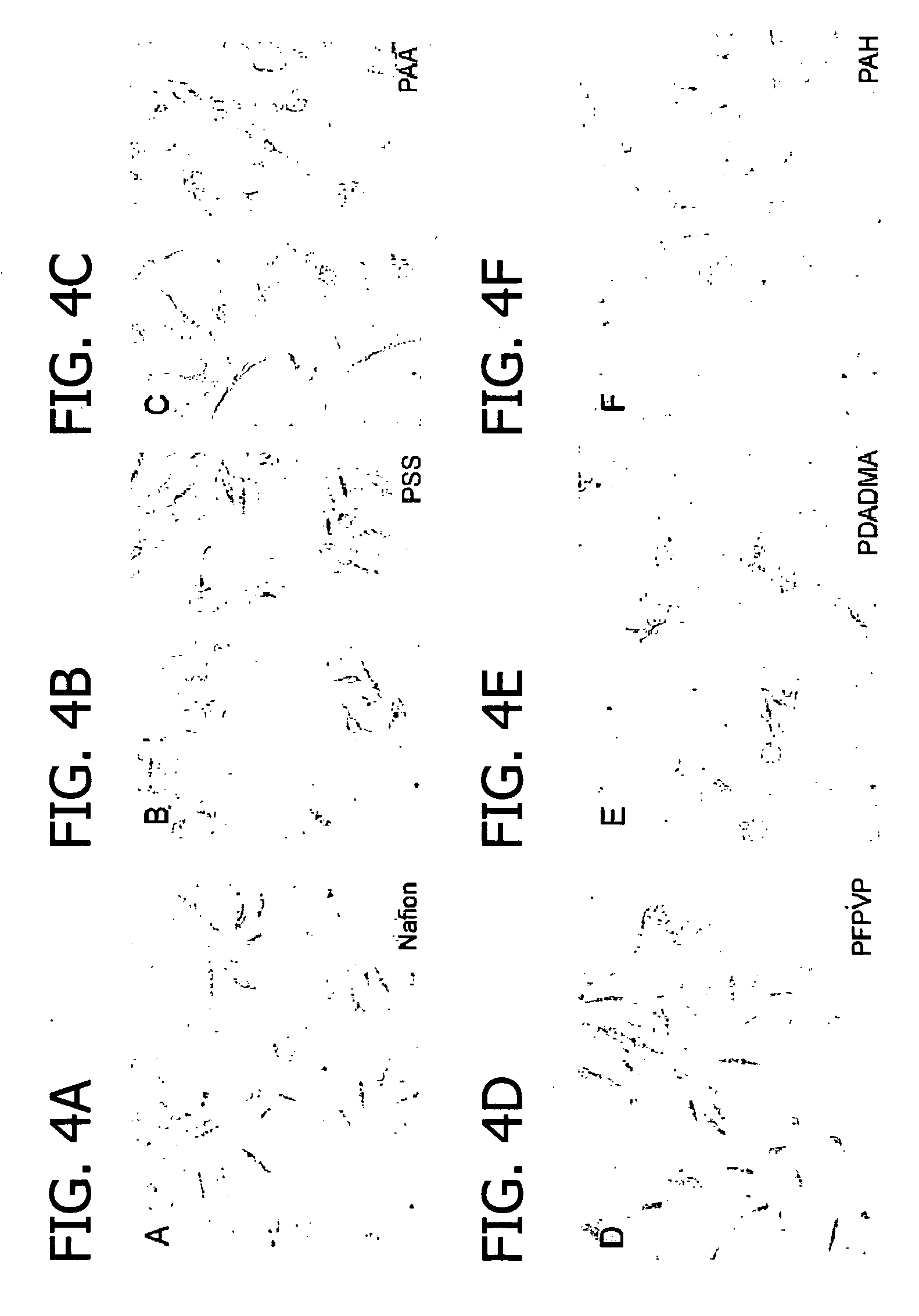Films for controlled cell growth and adhesion
a cell growth and adhesion technology, applied in the field of cell growth, can solve the problems of difficult to predict the biocompatibility of pemu-cells from simple measurements of protein adsorption, and achieve the effect of inhibiting cell adhesion and promoting cell adhesion
- Summary
- Abstract
- Description
- Claims
- Application Information
AI Technical Summary
Benefits of technology
Problems solved by technology
Method used
Image
Examples
example 1
Material Used to Build PEMUs and Characterization Methods
[0128] Materials. 1,3 propane sultone (PS) and acrylic acid were obtained from Aldrich. 2-(acrylamido)-ethyl dimethyl amine (AEDA) was obtained from Monomer-Polymer & Dajac Inc. Poly(styrenesulfonic acid), PSS (molecular weight, MW 7.3×104, Mw / Mn=1.06), poly(diallyldimethylammonium chloride), PDADMAC (MW 3.7×105, Mw / Mn=2.1), poly(allylamine hydrochloride), PAH (MW ˜7×104) and poly(acrylic acid), PAA (MW ˜2.4×105) were used as received from Aldrich. Poly(N-methyl-2-vinyl pyridinium iodide-block-ethylene oxide), PM2VP-b-PEO (PM2VP block 86% quarternized, respective block molecular weights 56,500:5900 Mw / Mn=1.08), poly(methacrylic acid-block-ethylene oxide), PMA-b-PEO (respective block molecular weights 41,000:30,700 Mw / Mn=1.5) and poly(4-vinyl pyridine), P4VP (MW ˜5×104) were from Polymer Source Inc. Nafion® was purchased from Aldrich and used as 2.5 wt. % solution in ethanol:methanol 50:50 vol / vol for stamping. All polymer, mo...
example 2
Polyelectrolyte Synthesis
[0135] 3-[2-(acrylamido)-ethyl dimethylammonio] propane sulfonate, AEDAPS.
[0136] The zwitterionic monomer was made from 2-(acrylamido)-ethyldimethyl amine (AEDA) and PS. 200 ppm methyl ethyl hydroquinone inhibitor was removed from AA and AEDA by passing the monomer through a column of DTR silica column (Scientific Polymer Products Inc.). 1.0 equivalent of AEDA (1.42 g, 10 mmol) was dissolved in 28 mL of propylene carbonate (PC). 1.1 equivalent of PS (1.34 g, 10.1 mmol) was added to the reaction mixture. The reaction was stirred at 45° C. for 1 hr. The product, 3-[2-(acrylamido)-ethyldimethyl ammonio] propane sulfonate, AEDAPS, precipitated and was washed with petroleum ether with a product yield of 60%. 1H NMR (300 MHz, DMSO): δ 8.45 (bs, 1H), 6.15 (m, 2H), 5.55 (m, 1H), 3.21 (m, 2H), 3.32-3.59 (m, 6H), 3.06 (s, 6H), 2.47 (t, 2H). FTIR: N—H, 3270 cm−1 (m); C═C—H 3037 cm−1, aliphatic C—H, 2964 cm−1; amide C═O, 1668 cm−1 (s); and 1545 cm−1 (s); C═C stretch 1...
example 3
Building up a PEMU Comprising a Zwitterionic Homopolymer
[0141] Zwitterionic polyelectrolytes comprise repeat units that bear a negative and a positive charge. Opposite charges on a repeat unit are in relatively close proximity and therefore have an opportunity to interact strongly. Because the zwitterion group is charge balanced (charge neutral) it does not require counterions when in solution.
[0142] Given that opposite charges on zwitterion polymer repeat units interact with each other, the question arises as to whether polyzwitterions would interact with other charged polymers. If there is no electrostatic or charge-pairing interaction between molecules, there is no driving force for intermolecular attraction and therefore no driving force for polyelectrolyte complexation, which is required for multilayer buildup.
[0143] An attempt was made to construct a multilayer from the zwitterionic polymer poly(N-propane sulfonate-2-vinyl pyridine), P2PSVP, and a negative or positive polye...
PUM
| Property | Measurement | Unit |
|---|---|---|
| Length | aaaaa | aaaaa |
| Length | aaaaa | aaaaa |
| Fraction | aaaaa | aaaaa |
Abstract
Description
Claims
Application Information
 Login to View More
Login to View More - R&D
- Intellectual Property
- Life Sciences
- Materials
- Tech Scout
- Unparalleled Data Quality
- Higher Quality Content
- 60% Fewer Hallucinations
Browse by: Latest US Patents, China's latest patents, Technical Efficacy Thesaurus, Application Domain, Technology Topic, Popular Technical Reports.
© 2025 PatSnap. All rights reserved.Legal|Privacy policy|Modern Slavery Act Transparency Statement|Sitemap|About US| Contact US: help@patsnap.com



